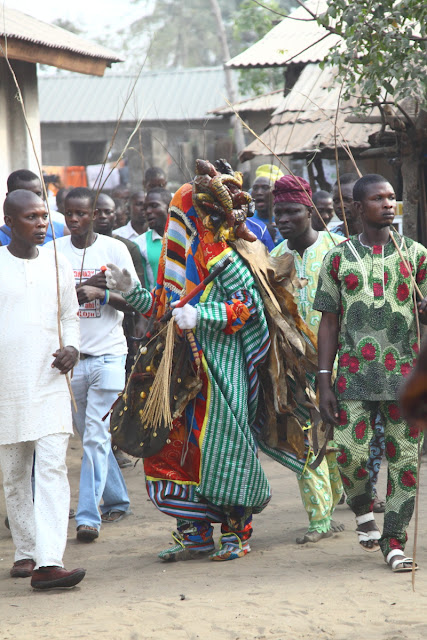 |
| egungun collecting money in the leather bag |
Whispering palms is the name of a resort located on the lagoon between Lagos and Badagry. A sort of local fun place with rooms and sport facilities, music animations on week-ends. Locals congregate there on week-ends as the place of happening. As a matter of fact the nearest place is a village fairly simple, crossed by what is now a bumpy dirt track - it may have been a proper road in a distant past.
As we crossed the village, on our way back, a masquerade was taking place. A crowd of men, armed with sticks or branches were surrounding an Egungun (Yoruba spirit) who, at the sound of the drums, was visiting each and every house to collect money offerings. It was said that those who did not want to give would be flogged as an encouragement to disburse something. That was a proper crowdfunding affair on a mandatory basis.
 |
| the masquerade with sticks and drums |
The Egungun was covered by colorful clothes and a mask at the back of his head with snakes made of papier-mâché. One of the dignitaries of the village is acting as the body of the spirit under the clothes and no one dares seeing who it is.
Masquerades in villages are used to serve different purposes depending on the Spirit that is invoked. At the beginning of the year it is often to collect money for a common goal.
 |
| a surprise at Whispering Palms resort |



Comments
Post a Comment